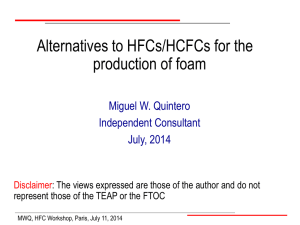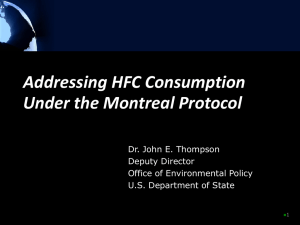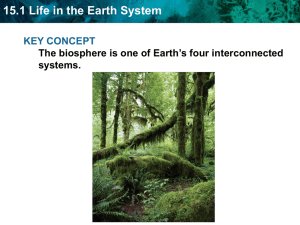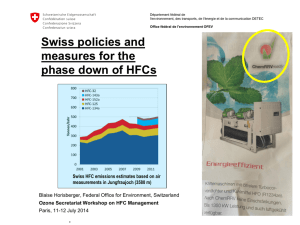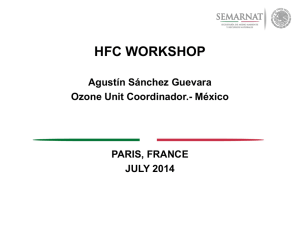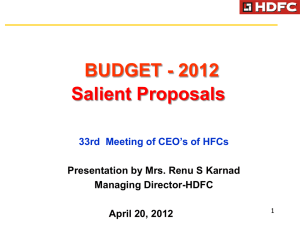0-Janet F. Bornman_opening session
advertisement
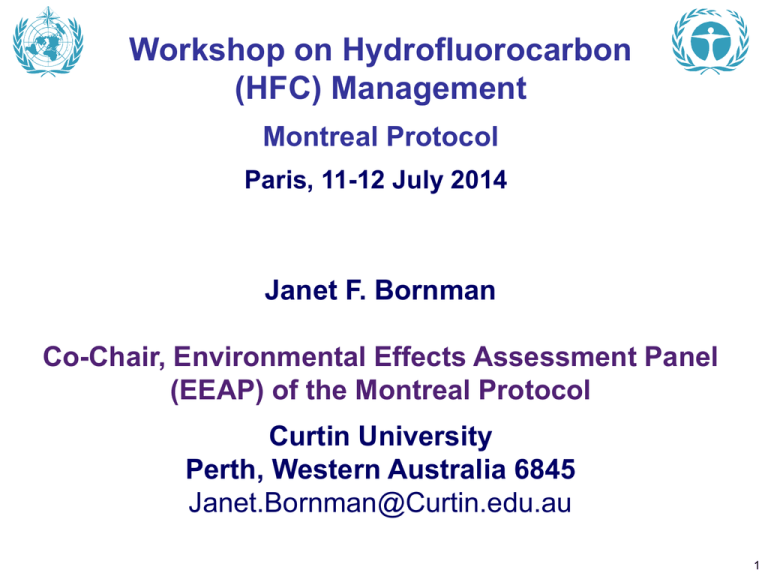
Workshop on Hydrofluorocarbon (HFC) Management Montreal Protocol Paris, 11-12 July 2014 Janet F. Bornman Co-Chair, Environmental Effects Assessment Panel (EEAP) of the Montreal Protocol Curtin University Perth, Western Australia 6845 Janet.Bornman@Curtin.edu.au 1 The effect of HFC and HCFCs on the biosphere Hydrochlorofluorocarbons (HCFCs) Ozone Depleting Substances (ODS) Greenhouse Gases (GHGs) Hydrofluorocarbons (HFC) Greenhouse Gases (GHGs) Do they have an effect on the biosphere? 2 The effect of HFC and HCFCs on the biosphere Levels of complexity UV radiation, ozone, climate, health, environment UV-generated hydroxyl radicals (OH), determine the atmospheric lifetime of climate-relevant compounds including: HFCs, HCFCs, CO, NOx, and SO2, methane …. HCFCs enter the body by inhalation of air, or by skin contact: breathing difficulties, skin irritation, may affect other internal organs 3 Air quality and UV radiation UV NOx Ground-level O3, aerosols Volatile organic compounds Premature mortality (annual, global) ~1.5 million from particulate matter (sulfate, nitrate, most organic aerosols) ~0.5 million from O3 (OECD, 2013) Agricultural losses of $12-21 billion (Avnery et al., 2011) Complex sensitivity to UV radiation and climate Ozone and climate implications Documented: Effects of decreased O3 and increased UV radiation Not yet well documented: How will the environment/biosphere be affected by increased O3 and decreased UV radiation? And how will climate interactions modify the response? Predicted likely decrease in tropospheric OH Lower OH implies slower removal of many important gases: HFCs, HCFCs, other VOCs, methane, NOx, SO2 5 The effect of HFC and HCFCs on the biosphere Trifluoroacetic acid (TFA), a breakdown product of HCFCs and HFCs in the atmosphere Readily deposits to the Earth’s surface through dry and wet deposition Some of the new hydrofluoroolefins (HFO, unsaturated HFCs) as replacements for HFCs can lead to increases in TFA (HFO TFA) 6 TFA - Environments at risk • Strong acid, forms salts with minerals in soil HFCs, HFOs, and HCFCs CF3-CXyH O O CF3-C-OH Salt lakes with no outflow, loss by evaporation only CF2Cl-C-OH TFA Microbiological degradation in soil and water 7 • Concentrations in flowing water are small • Accumulation will occur in salt lakes, playas and in the ocean The effect of HFC and HCFCs on the biosphere Trifluoroacetic acid (TFA) Phytotoxic - negative effects on plant growth But concentrations not sufficient for observed effects 8 TFA and TCA Length of watermilfoil (cm) 35 30 25 Control 100 μg/L 1,000 μg/L 30,00 μg/L 10,000 μg/L Control 20 15 No significant effects on plants, even at high concentrations 10 5 0 -10 0 10 20 30 Time (days) 9 40 50 60 The effect of HFC and HCFCs on the biosphere Trifluoroacetic acid (TFA) Phytotoxic - negative effects on plant growth But concentrations not sufficient for observed effects Anthropogenic sources Atmospheric degradation of some HCFC and HFCs Atmospheric degradation of narcotics Trifluoromethyl containing pesticides, aluminum production 10 Approximate concentrations of TFA •Switzerland, Fresh water lakes, springs, rivers: ca 100 ng/L •USA, Fresh water lakes, springs, rivers: 20 – 140 ng/L •Europe, Rain water: 0 - 1.5 µg/L •Oceans: 10 – 200 ng/L Depositions of TFA largest during the growing seasons 11 Summary • HCFC has potential negative health effects • TFA is not bioaccumulative • Risks to mammals, including humans, aquatic and terrestrial organisms: negligible • TFA sources (natural and anthropogenic) and cycling through the biosphere should be considered for their environmental impacts • Continuing monitoring of TFA in the environment may be required if HFOs are significantly increased to replace HFCs 12 Summary WMO Assessment of Ozone Depletion (2007): “TFA from the degradation of HCFCs and HFCs will not result in environmental concentrations capable of significant ecosystem damage.” 13

